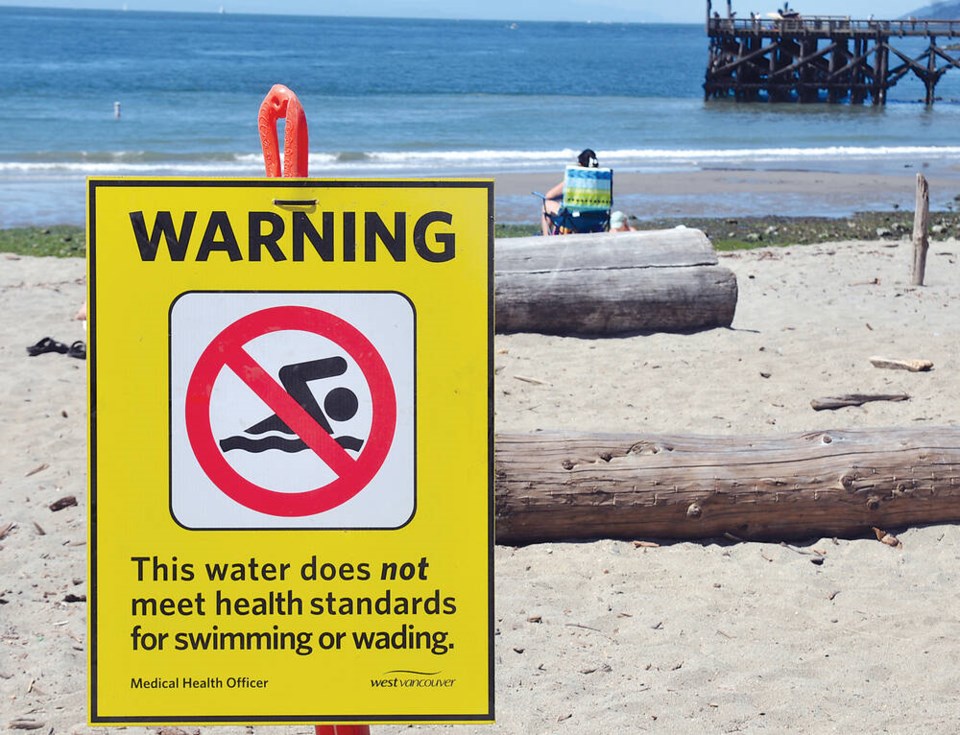Beach goers hoping to cool off in West Â鶹´«Ã½Ó³»waters can now do so without worrying about repercussions to their health.
A no-swim advisory for Ambleside Beach has been lifted, which had been in place for nearly three weeks due to high E. coli levels in the water.
On Saturday (July 6), district staff said they were contacted by Â鶹´«Ã½Ó³»Coastal Health about removing the advisory, based on sampling done the day before. Warning signs on the beach were then removed.
But according to VCH data, E. coli levels at Ambleside are still triggering a “beach action value,” which means that more regular testing is being done, and efforts are being made to determine a potential cause.
Per the most recent testing, E. coli levels show an MPN (most probable number) of 281 per 100 millilitres at Ambleside and 265 at Eagle Harbour. On , levels were 860 and 683 at those locations, respectively.
According to Health Canada guidelines, single-sample maximums for water quality should be less than 400 E. coli per 100 ml. Swimming in contaminated water can lead to infection or illness.
VCH has not stated a specific cause of the high E. coli levels, but said possible contamination sources include recreational vehicles, animal waste and sewer overflows.
For the most recent swimming advisories, check the .

